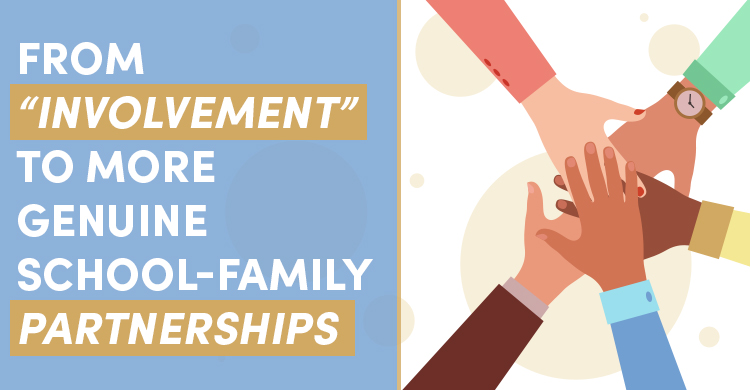“Incessant testing and grading and criticism keep you in a chronic probationary state that breeds low self-esteem.”
–James Moffett & Betty Jane Wagner, Student-Centered Language Arts K-12
Based on The Student-Centered Classroom
We should be concerned about the many students who have been categorized as “behind” because of “COVID learning loss.” The words educators use to describe students have an enormous impact on how they see themselves. Fall 2021 is a time like no other in recent history when we can lift up students or limit them based on how they were able to navigate an unforeseen and incredibly challenging year of education. This is a time when rigid adherence to standardized testing policies and grading practices could have a lasting negative impact on how our students see themselves and on the role they expect school to play in their lives.
Evaluate each student’s unique progress toward achievement of learning goals
Think about a student who has stayed engaged with learning and grown intellectually and emotionally in consequence. Think about a student who has used this increasingly mature sense of understanding to help siblings and friends engage in learning. Think about this same student receiving grades of C and D. Educators need to read between the lines. This is a time when it is crucial to get to know each student as a whole person and to evaluate each student’s unique progress toward the achievement of important learning goals. If there was ever a time to be wary of standardized tests and averaged grades on one-size-fits-all assignments, this is that time.
Keep an open mind about diverse forms of learning
Recent articles from a variety of sources are converging around an acknowledgment that we don’t yet know enough about the impact of remote schooling and homeschooling during the pandemic on long-term student achievement to put together an accurate picture. It’s fair to suppose that some students thrived in the home-learning environment, some got along well enough, and some felt isolated from support and lost on their own. According to Sarah Schwartz (2021) in an article for Education Week, some indicators suggest many students are doing about as expected in math and reading. Others suggest that for some students learning gaps will be no greater than gaps that typically occur over summer break and can be dealt with in a similar fashion with encouragement and review. Knowing that students have dealt with school closings in different ways, educators need to approach finding out how students are doing with compassion and minds open to the diverse forms that earnest, enduring learning will have taken. It’s a time to be flexible and fair, to look for the best in each student, and be prepared to offer individualized support when it’s needed.
Take into consideration a shortlist of urgent concepts
Flexibility and fairness depend on a shortlist of concepts that are not new but have become urgent:
- Students can achieve the same learning goal in different ways.
- Requiring every student to do the same assignments is not necessary and can be counterproductive.
- Students need timely, detailed feedback all the time.
- Students need grades only at the end of a marking period and only to indicate progress toward achievement of learning goals. Grades should not be averages of all assignments undertaken.
- Students benefit academically as well as socially from working collaboratively.
- We can trust students to want to learn.
- As educators, our job is to support students, not to sort them.
As Stephen Merrill (2021) points out in his April 16 article for Edutopia, it’s crucial that we welcome students to school and focus not on testing for weaknesses but on celebrating resilience and strength.
Take advantage of a hard-earned but real opportunity for reform
At best, standardized testing can help school districts get a broad picture of how the district is doing. At worst, standardized testing steals precious time from activities that contribute directly to student progress and increases the pressure many students feel in response to rigid grading and testing practices. School re-openings offer a hard-earned but real opportunity for much-needed reform as suggested in Jack Schneider’s (2020) article for The New York Times called “Pass-Fail Raises the Question: What’s the Point of Grades?” Real change happens when the need is great. As Stephen Merrill warns, failure to adjust our practices to meet our students’ needs this fall would be a failure of historic proportion and a tragic loss for our students.
References
- Merrill, S. (2021, April 16). “Too Much Focus on ‘Learning Loss’ Will Be a Historic Mistake” Edutopia. Accessed at https://www.edutopia.org/article/too-much-focus-learning-loss-will-be-historic-mistake on August 3, 2021.
- Moffett, J., & Wagner, B. J. (1992). Student-centered language arts, K–12. (4th ed.).
- Portsmouth, NH: Boynton/Cook.
- Schneider, J. (2020, June 25). “Pass-Fail Raises the Question: What’s the Point of Grades?” The
- New York Times. Accessed at https://www.nytimes.com/2020/06/25/opinion/coronavirus-school-grades.html on July 6, 2020.
- Schwartz, S. (2021, April 22). “Learning Loss, in General, Is a Misnomer’: Study Shows Kids Made Progress During COVID-19” Education Week. Accessed at https://www.edweek.org/leadership/learning-loss-in-general-is-a-misnomer-study-shows-kids-made-progress-during-covid-19/2021/04 on August 4, 2021.






